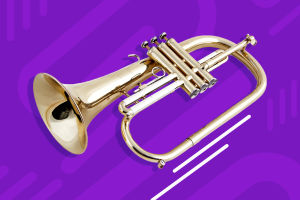The accordion bass is commonly referred to as the little dot in the left hand. The number of dots is the number of basses there are. Accordions are generally divided into basses, such as 8, 32, 48, 96, and 120 basses.
Beginners are advised to buy a 48 or 60 bass as a start. For one thing, beginners really don't need a full-fledged instrument, and for another, 120 basses are relatively expensive and not very cost-effective for most beginners (especially those who are not planning to practice for a long time).
Of course, if you are financially and physically able to do so, a 120 bass is not out of the question. The difficulty in starting the accordion is mainly in the left hand and the coordination. The left-hand consists of the bass and the bellows. The left-hand includes the bass and the bellows.
Historically, there have been many types and sizes of accordions, but in terms of structure and form, they can be divided into four categories, namely the whole-scale accordion, the chromatic accordion, the key-button accordion, and the keyboard accordion.
1. The structure of the whole-scale accordion is very simple, equivalent to a harmonica with additional bellows; the right-hand part has ten or so keys for playing tunes, and the left-hand part has two chord keys for accompaniment; on the same key, the bellows are pushed and pulled to produce two notes of different heights (similar to the harmonica's articulation).
There is no strap on the instrument, and the instrument is completely supported by both hands; the biggest disadvantage of the whole-scale accordion is that it cannot be transposed, and if it is transposed, it is necessary to change to another The most important disadvantage of the whole-scale accordion is that it is not transposable.
2. The chromatic accordion is, first of all, easier to transpose; the number of keys in both the left and right hands has been increased, and the different height of the windchest makes it possible to play this instrument with a wide range of notes; the chromatic accordion also has no strap and is still played with both hands.
The new chromatic accordion (also known as the new chromatic accordion and the Bajan) is equipped with a back strap, which frees up the hands; in addition, the push and pull bellows have the same height of articulation so that the bellows can be changed and used with great freedom.
3. The number of keys in the left-hand section of the keyed accordion has increased considerably and the arrangement of the keys is quite scientific, which is why it is still used today. The keys in use include three, four, and five rows of keys.
The most important advantage of the keyed accordion is chromatic up and down rows of the twelve mean meters. In the 1960s the keyboard accordion was introduced, and since then the accordion has been divided into two categories: keyboards and keyboards, both of which have developed in parallel.
4. The left-hand part of the keyboard accordion is identical in structure to the button accordion, except that the right-hand part has a piano-style keyboard instead of a button.
It is probably due to the piano that this improvement led to the accordion, a European folk instrument, rapidly gaining the widest popularity worldwide. The bass is the collective name for left-handed keys, counterpoint bass, and harmony.


